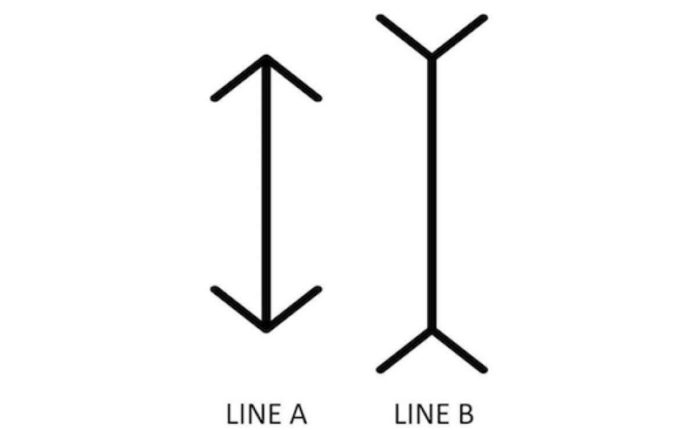I am biased, and so are you.
Everyone we know is biased, and so is everyone we do not know. Every group, institution and organization. Human beings are biased. They are hard wired to be biased. We could not not be biased. No matter how hard we try, no matter what we say, we are biased. We have always been biased and it is all but certain, we always will be.
Is the media biased? Yes.
Is academia and entertainment? Yes.
What about politicians, preachers, journalists, soccer mom’s and people who eat kale chips? All biased, every single one.
We are biased about everything, everywhere and always.
A bold assertion, let’s break it down.
Dictionary.com defines bias as “a particular tendency, trend, inclination, feeling, or opinion, especially one that is preconceived or unreasoned” Dictionary.com shows an additional definition of bias as “unreasonably hostile feelings or opinions about a social group; prejudice”. This is a commonly used understanding of the word and is one way bias is expressed, but this is not the primary meaning we are using in this analysis.
Other valuable words are perspective, filter, worldview, point of view and lens. However, none of these words individually capture the full meaning of the complex subject of human bias.
Human beings perceive the world around us thru a lens, a filter, a screen. Certainly our sensory input is filtered or processed thru our sensory faculties such as sight or hearing. But much more is at work here. Over the course of our lives we absorb and process emotions, concepts, joy and pain, resentments, attachments and sympathies, observations and memories real or imagined, from a full spectrum of input both external and internal. Our external input comes from parents, schools and our social and natural environments. Our internal input is derived from a full range of inner predispositions that are to varying degrees, a function of birth, brain chemistry, and what we have collected simply by living.
This broad array of internal and external input, melds together to structure a working perspective. This becomes a functional point of view from which we engage the world. This might also be called a working worldview. It would be a functional perspective or a working worldview because it is this perspective, this worldview, this filter, that is responsible for the way we see and interact with the world. It is a place to stand. It is the place where we stand right now. Not exactly the place where we stood yesterday and not exactly where we will stand tomorrow. We are seeing the world thru a lens, a filter, that by definition determines what we perceive. It could not be otherwise.
It is as if we are wearing a pair of glasses. The shape and color of the lens determines what we see. Once we put the glasses on, we can not see around them, we can only see thru them. Once the lens is on, it becomes the intermediary between the world ‘as it is’ and the world ‘as we understand it to be’. And there is all but certain to be a discrepancy between the two. In this analogy, our lens, or worldview or working perspective is a function of our multitude of emotions, experiences, and intellectual learning. It is not a visible lens, as with eyeglasses, but a lens nevertheless. It resides in the composite of who we are at any given point of time, from our most primal consciousness, thru raw emotions to our higher faculties of reason and rationality.
It alone, determines what we like and who we like, what makes sense and what seems irrational, our affiliations, who we marry, which movies we like, our religion and who we vote for.
While this working perspective, bias or world view is not visible, the expression of it, very much is. If our fictitious neighbor, Mr. Fidelity, has a bias that views authority figures as trustworthy, he will find a world full of trustworthy authority figures. While changing world views and bias is the stuff of hard work, occasionally a different reality can modify the bias. If a long enough parade of authority figures betraying his trust intersects with a moment of intellectual openness, Mr. Fidelity might be able to modify his bias. But it is unlikely.
Why is that?
Why is it that when an idea, perception or concept is fixed in our mind, it is so difficult to dislodge?
One reason is because it is hard wired into our biology.
Take a look at the diagram of the Muller-Lyer illusion above. The center line on the right looks longer than the center line on the left, but they are in fact, equidistant.
Now that you know they are the same length, look again. There is a part of your mind that still thinks the right one is longer, even though you know the truth, isn’t there?
If something as rudimentary as visual perception can have the effect of cementing a false belief in our mind in plain view of the truth, how difficult is it to imagine the crushing cumulative effect of a lifetime of images, emotions, concepts, teachings and propaganda that define our ability to see ‘things as they are’ and not as we wish, imagine or hope them to be?
In 1620, the philosopher Francis Bacon said it best …
For what a man had rather were true he more readily believes. Therefore he rejects difficult things from impatience of research; sober things, because they narrow hope; the deeper things of nature, from superstition; the light of experience, from arrogance and pride, lest his mind should seem to be occupied with things mean and transitory; things not commonly believed, out of deference to the opinion of the vulgar. Numberless in short are the ways, and sometimes imperceptible, in which the affections color and infect the understanding. [Francis Bacon, “Novum Organum,” 1620]
We may be tempted to dismiss this focus on perspective as overemphasis on an abstract concept with little relevance to practical life.
But think again. World view is everything.
Perspective is to life, what a rudder is to a ship. In both the personal and public sphere, it determines course and destination. We unnecessarily extract a cost from ourselves and our world when we overlook it’s importance.





























